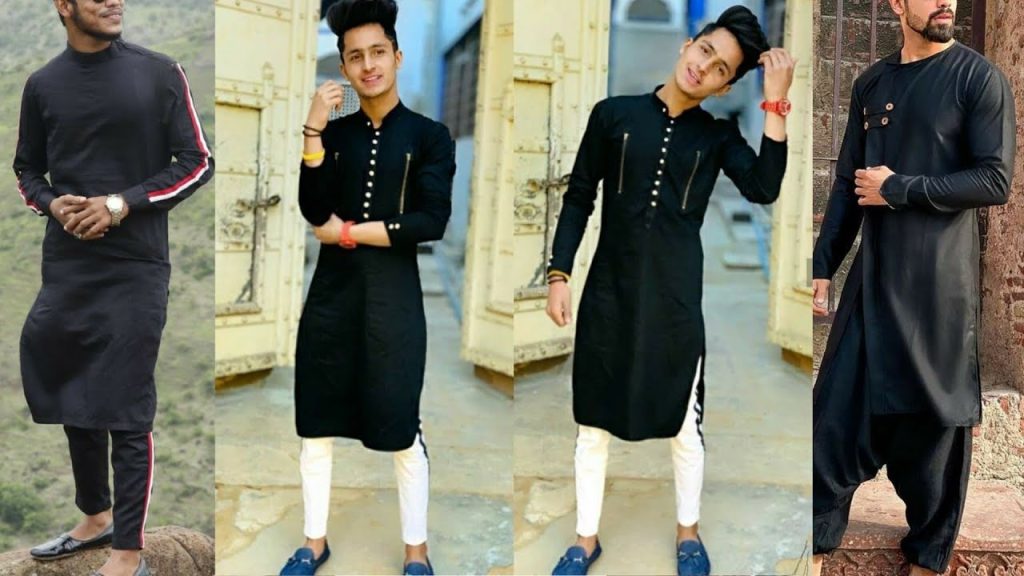
Welcome to our blog post all about dressing your little one in embroidered kurtas for celebrations! Whether it’s a festive occasion or a family gathering, there is something truly special about seeing children dressed in traditional attire.
In this article, we will explore the history and significance of the kurta, why embroidered kurtas are a popular choice for children, different types of embroidery and their meanings, tips for choosing the perfect kurta for your child, how to style it for various celebrations, as well as maintaining and caring for an embroidered kurta. So let’s dive right in and discover the timeless charm of these beautiful garments!
History of the Kurta and Its Significance in Celebrations
The kurta has a rich history that dates back centuries. Originating in ancient Mesopotamia, this loose-fitting garment was traditionally worn by men and women as a comfortable and versatile piece of clothing. Over time, the Boys kurta pajama made its way to India, where it became an integral part of the country’s cultural fabric.
In Indian celebrations, the kurta holds great significance. It is often considered a symbol of tradition and heritage, representing the connection to one’s roots. The intricate designs and vibrant colors of embroidered kurtas add an extra layer of beauty and elegance to festive occasions.
Whether it’s Diwali, Eid, Durga Puja or any other celebration, adorning your child in an embroidered kurta adds charm and authenticity to their ensemble. It not only showcases their cultural pride but also makes them stand out among the crowd.
So next time you’re preparing for a special occasion or family gathering, consider dressing your little one in an embroidered kurta – a timeless garment that celebrates our traditions while making our children look absolutely adorable!
Why Embroidered Kurta is a Popular Choice for Children
Embroidered kurtas have always been a popular choice for children when it comes to traditional celebrations. There are several reasons why parents opt for these beautifully crafted garments for their little ones.
Embroidered kurtas add an element of elegance and sophistication to any outfit. The intricate designs and vibrant colors instantly elevate the overall look, making children stand out in the crowd. It’s no wonder that these kurtas are often chosen for special occasions like weddings or religious ceremonies.
Embroidery holds a cultural significance in many communities. These decorative patterns not only showcase the rich heritage but also tell stories through their motifs. From floral designs symbolizing growth and prosperity to geometric patterns representing unity and harmony, each stitch carries its own meaning.
Investing in an embroidered kurta for your child means embracing timeless fashion that can be passed down through generations. These garments hold sentimental value and become cherished heirlooms over time.
Embroidered kurtas remain a popular choice among parents because of their elegance, cultural significance, versatility in styling options, comfortability factor and ability to create lasting memories within families.
Different Types of Embroidery and Their Meanings
Embroidery is an ancient art form that has been passed down through generations. Each region and culture has its own unique style of embroidery, each with its own meanings and symbolism. Let’s explore some of the different types of embroidery and their significance.
One popular type of embroidery is Zardozi, which originated in Persia and later made its way to India. This intricate style involves using gold or silver threads to create elaborate patterns on fabric. Zardozi symbolizes wealth, royalty, and luxury.
Another type of embroidery is Phulkari, which hails from the Punjab region in India. Phulkari literally translates to “flower work,” and true to its name, it features vibrant floral motifs stitched onto bright-colored fabric. Phulkari represents fertility, joy, and celebration.
Kantha embroidery comes from West Bengal in India and Bangladesh. It involves stitching together layers of old sarees or dhotis with tiny running stitches to create beautiful designs. Kantha signifies love, protection, and storytelling.
Tips for Choosing the Perfect Embroidered Kurta for Your Child
When it comes to choosing the perfect embroidered kurta for your child, there are a few key factors to consider. First and foremost, you’ll want to think about the occasion or celebration where your little one will be wearing the kurta. Is it a formal event like a wedding or religious ceremony? Or is it a more casual gathering with family and friends?
Next, take into account your child’s personal style and preferences. Some children may prefer bold and vibrant colors, while others may lean towards more subtle shades. Consider their comfort as well – opt for fabrics that are soft, breathable, and gentle on their delicate skin.
To ensure the perfect fit for your child’s kurta, take accurate measurements of their chest width and length before making any purchases online or visiting a store. It’s also important to consider the length of the kurta – too long can hinder movement while too short may look disproportionate.
Don’t forget about accessories! A matching pair of pajama bottoms or churidar pants can complete the ensemble beautifully.
By keeping these tips in mind when selecting an embroidered kurta for your child’s special occasion attire, you’re sure to find something that not only looks great but also reflects their individuality and adds an extra touch of elegance to their celebrations!
How to Style the Kurta for Different Celebrations
When it comes to styling a kurta for different celebrations, there are plenty of options to explore. The versatility of this traditional garment allows you to dress up your little one in various ways, depending on the occasion.
For formal gatherings or weddings, pair the embroidered kurta with a dhoti or churidar pants. Opt for rich and vibrant colors like royal blue, maroon, or emerald green. Add a touch of elegance by accessorizing with a matching turban or scarf.
If you’re attending a more casual event such as a family gathering or festival, you can style the kurta with denim jeans or leggings. Choose lighter shades like pastel pink, mint green, or lemon yellow to create a playful and cheerful look.
To give the outfit an extra dose of cuteness, consider adding some accessories like juttis (traditional Indian shoes), beaded bracelets, or colorful hair clips.
Styling your child in an embroidered kurta is not only fashionable but also celebrates our cultural heritage. So go ahead and experiment with different styles to make your little one shine at every celebration!
Maintaining and Caring for an Embroidered Kurta
Maintaining and caring for an embroidered kurta is essential to ensure its longevity and preserve its beauty. Here are some tips to help you keep your little one’s kurta in top condition.
Always check the care instructions provided by the manufacturer before washing the kurta. Some kurtas may require dry cleaning or handwashing only, while others can be machine washed on a gentle cycle.
When washing the kurta, turn it inside out to protect the embroidery from getting snagged or damaged. Use a mild detergent specifically designed for delicate fabrics and avoid using bleach or harsh chemicals that can fade or discolor the embroidery.
After washing, gently squeeze out excess water without wringing or twisting the fabric. Lay it flat on a clean towel to air dry away from direct sunlight, as prolonged exposure to sunlight can cause fading.
To prevent wrinkles, iron the kurta on low heat with a pressing cloth placed over it. Avoid ironing directly on the embroidery as this can flatten or distort its intricate patterns.
Store your embroidered kurta in a cool and dry place away from moisture and insects. Consider placing it in a garment bag to protect it from dust and damage when not in use.
Final Words
The history and significance behind the kurta make it a perfect choice for celebrations. Its origins can be traced back to ancient times when it was worn by nobles and royals. Today, dressing your little one in an embroidered kurta not only pays homage to this rich heritage but also adds a touch of elegance and sophistication to their ensemble.
One of the reasons why embroidered kurtas are such a popular choice for children is because they effortlessly blend tradition with modern style. The intricate embroidery work on these garments tells a story – each stitch representing skilled craftsmanship passed down through generations. This artistry adds character and uniqueness to every piece, making it a cherished heirloom that can be treasured for years to come.
When styling an embroidered kurta for different celebrations, you have endless possibilities! For weddings or formal events, pairing it with churidar pants or dhoti pants adds an extra touch of sophistication. For more casual gatherings or festivals like Diwali or Eid al-Fitr , teaming it up with jeans or leggings creates a fusion of traditional and modern aesthetics.






